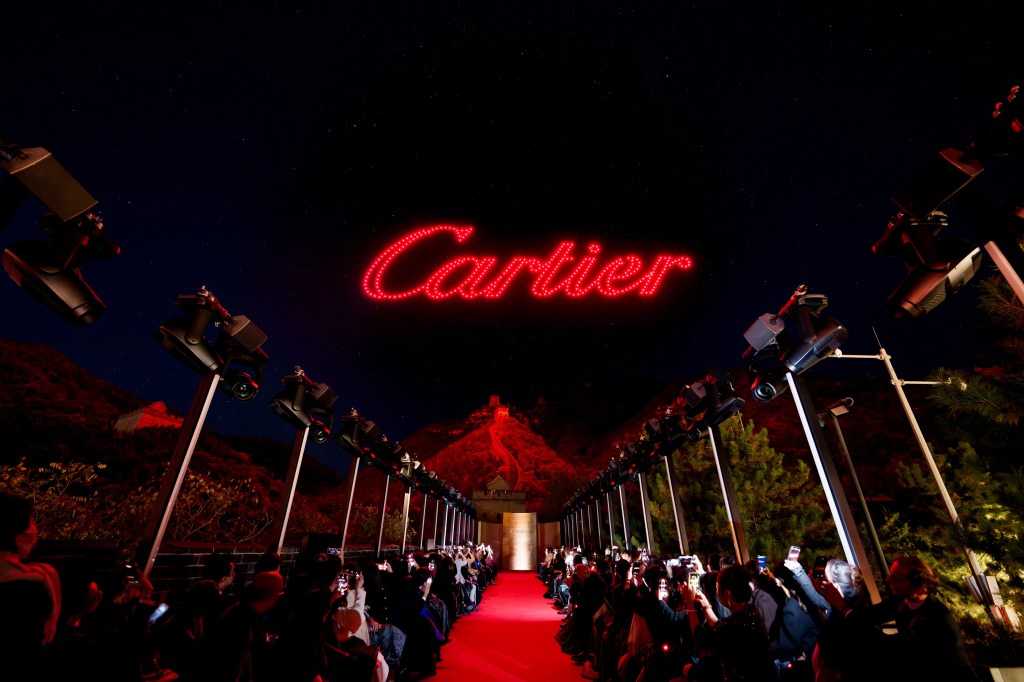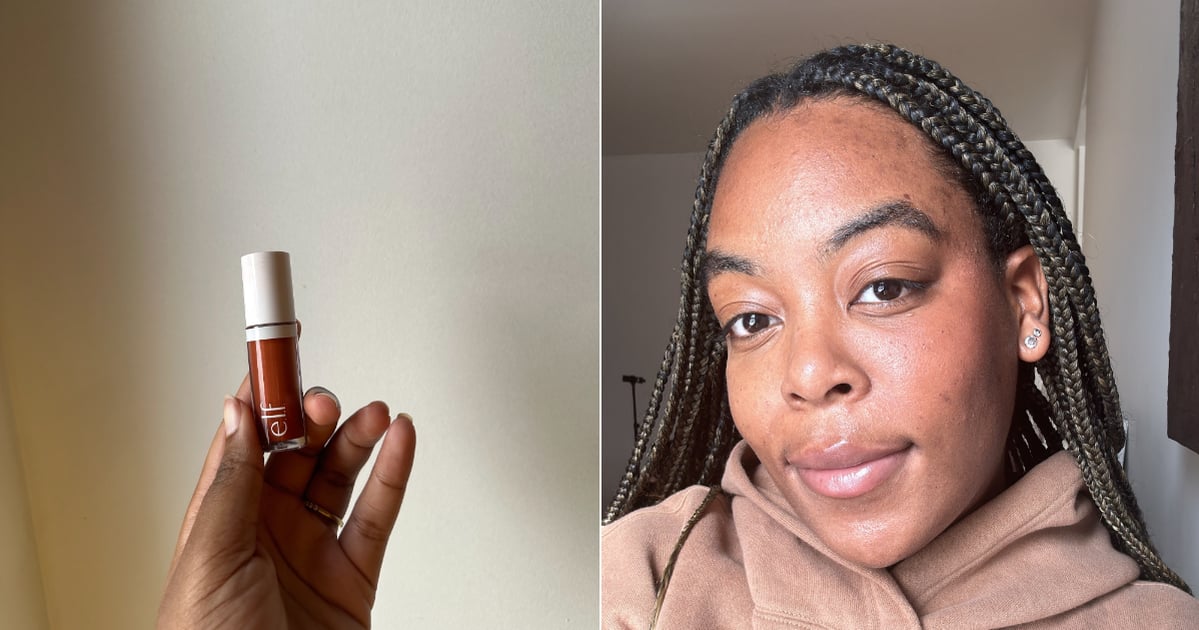Luxury’s season in the sun appears to be over, brought to an end by a cyclone of events, including a rapid rise in interest rates; wars in Ukraine and the Middle East; tepid demand in China, and aspirational customers spending less.
A year that began with great promise and with luxury leaders racing to court the Chinese after lockdowns there lifted has ended in a pool of disappointment, anxiety and downgrades from analysts covering the sector.
RBC Capital Markets said 2023 marked the end of a “supercycle” for the sector, and argued the macro headwinds were “the worst in decades.”
The bank said that average consumers have less residual income in their pockets due to higher inflation and interest rates, “which is likely to impact spending,” while the renewed popularity of traveling and dining out were all taking a toll on growth.
The size of the luxury market is also a problem, RBC said. It is currently around 25 percent above 2019 levels and the compound annual growth rate over the past four years has been “above longer-term averages” for the most of companies it covers.
“This is not sustainable and we expect moderating revenue growth trends from here,” said the report, which was published last fall.
Some industry leaders have taken the negative trends in their stride, others less so. So far, most have tried to manage shareholder expectations; focus on longer term-prospects, and acknowledge the cyclical nature of the business.

Compagnie Financière Richemont chairman Johann Rupert was among the first to report a slowdown in the U.S., and to warn that Chinese consumers would be more cautious, and not “bust their credit cards” after lockdowns in the region lifted.
He believes the slowdown is a natural result of the spike in interest rates to combat inflation. “You fight inflation by pushing down asset prices, and — I hate to say it — by increasing unemployment,” Rupert said.
Mytheresa’s chief executive officer Michael Kliger was also early to flag changes in consumer trends, noting that aspirational shoppers had lost their appetite for luxury, albeit temporarily.
“Reality has sunk in following a crazy moment of spending” during the pandemic, Kliger said earlier this year. He added that there is “too much stock in the market as well as promotional fatigue” and argued it will take some time before less wealthy shoppers return.
Emilio Macellari, chief financial officer and executive director at Tod’s, managed market expectations as best he could during a recent earnings call. He told analysts that despite impressive growth in the first three quarters of 2023, weak spots have begun to appear.
“The market is tougher now than it was at the beginning of the year with a slowdown in consumption and demand from consumers,” Macellari said.
He added that in China, a slowdown in consumption that began at the start of the third quarter continued into October and November, although the company was still growing in the double digits.

Like every other luxury manager, he highlighted that wealthy Chinese citizens are traveling once again, but they’re spending their money in places such as Hong Kong, Japan and Macau, rather than in mainland China, Europe or the U.S.
Jean-Marc Duplaix, Kering’s deputy CEO in charge of operations and finance, also flagged tepid demand in mainland China.
“Consumer sentiment is not where we were expecting it to be at the beginning of 2023,” he said, adding that sales trends have been “flat” in North America, with persistent weak traffic and “no inflection point” in sight.
This particular luxury slowdown appears to be a different, and more menacing, beast.
“This is a challenging macro environment, which is coming from all regions, and it’s quite unique,” said Burberry’s CEO Jonathan Akeroyd. “Historically, you’d get a softness in one region, and you’d be able” to compensate for it somewhere else.
That’s not the case this time.
Akeroyd said that inflationary challenges and cost of living issues were having an impact worldwide, including in Burberry’s home market, which has been affected further by the U.K. government’s repeal of tax-free shopping.

All of those negative dynamics dented Burberry’s growth in the second fiscal quarter, prompting the company to warn that it might not meet its revenue growth target for the 2024 fiscal year, which ends in March.
Burberry had been expecting low-double-digit growth for the full fiscal year, and adjusted operating profit between 552 million pounds and 668 million pounds. Now, adjusted operating profit could land at the “lower end” of the consensus range, Burberry said.
In one report, RBC also tried to contextualize the great luxury slowdown of 2023.
The bank looked at three luxury downturns since 2010. It said that, on average, they had lasted for four quarters and brought a 12 percent decline in shares.
It believes the current downturn “could be more pronounced” due to inflation; the short, sharp increases in interest rates, and the macro situation in China post-pandemic.
As a result of the grim macroeconomic backdrop, analysts’ downgrades have been raining down.
A few weeks ago, Morgan Stanley downgraded LVMH Moët Hennessy Louis Vuitton to “in-line weighting” from “overweight,” and slashed its share price target to 790 euros from 860 euros.
The bank attributed its decision to a decline in demand for luxury worldwide, and the expectation that the first six months of 2024 will be extra challenging for public companies due to tough comparisons with the prior year.
Even Richemont, with its robust balance sheet and net cash reserves of 6.5 billion euros, was downgraded.
RBC slashed the luxury giant’s share price target to 130 Swiss francs from 170 Swiss francs based on new, lower, earnings estimates.

The RBC report, penned by Piral Dadhania and his team, said despite the quality of Richemont’s stock, “we are less confident on its near to midterm outlook, reflecting our expectation of moderating luxury sector trends.”
Dadhania added that Richemont could be particularly vulnerable to the normalization in spending, given the higher price points of hard luxury, “and, arguably, the higher feel-good factor required” to purchase fine jewelry.
The bank cut Richemont’s earnings estimates by 8 percent for fiscal 2025 (which begins in April 2024) and downgraded the stock to “sector perform,” which means the fine jewelry and watch giant is expected to perform in line with comparable luxury stocks.
“The luxury cycle is turning, and despite Richemont’s strong momentum in recent years, we believe [fiscal 2025] consensus estimates are too high. More broadly, hard luxury, specifically watches, is likely to be more challenging as Rolex supply is increasing and could cannibalize non-Rolex brands, to an extent, in our view,” the bank wrote.
Meanwhile, Bernstein’s Luca Solca has downgraded Prada to “market perform,” with a price target of 49 Hong Kong dollars.
“Self-help stories are difficult when demand is strong. They become even more difficult when consumers put the foot on the brake and concentrate their spend on must-have brands,” wrote Solca, adding that Prada’s leather goods sales have been lackluster this year.

Solca was also “concerned about price increases at Prada as consumers continue to sober up from post-COVID-19 euphoria.” He believes the Italian brand needs to ramp up its marketing and communications spend if it wants to remain in the “premier league,” of luxury companies.
In that same report, Solca’s talked about the difficulties that could lie ahead for luxury groups in the first half of 2024.
He said that ongoing geopolitical tensions, interest rate hikes and inflation will impact consumer sentiment.
Solca added that 2024 is a presidential election year in the U.S., “which normally brings a rather subdued macroeconomic environment. Against those risks, some investors wonder if the path to luxury spend normalization may have to go through a couple of years of decline as consumers atone for the post-COVID-19 pandemic euphoria.”

In these trying times for luxury, brands have sharpened their focus on acquiring — and maintaining — customers.
Large and small brands have been flocking to China to forge closer ties with the local fashion community, ending the year much as they started it by courting the country’s shoppers.
Stella McCartney closed Shanghai Fashion Week with a restaged spring 2024 show. The showcase was accompanied by a performance by Chinese rapper Adawa with dancers dressed in pieces from the latest Stella McCartney x Hajime Sorayama capsule.
In October alone, McCartney, Donatella Versace, Daniel Lee, Thom Browne, Stuart Vevers, Peter Do, Sébastien Meyer and Arnaud Vaillant, were among the many creatives in China attending local events and hosting lavish dinners for local celebrities, influencers and editors, in the hope of better times ahead. Meanwhile, LVMH is deeply engaged in Hong Kong, staging Pharrell Williams’ pre-fall men’s show for Louis Vuitton there earlier this month and revealing plans to stage Dior’s men’s pre-fall show there in the first half of 2024.
Even as luxury slows, executives accept that the boom times had to come to an end at some point. At Chanel’s Metiers d’Art show in Manchester, England, earlier this month, Bruno Pavlovsky, the brand’s president of fashion, suggested demand for luxury has always been uneven.
“We shouldn’t think that the world of luxury is one of steady growth,” he told WWD. “Some people believe that the sky is the limit, but we don’t. We’ve always seen markets in full expansion — or others facing a slowdown — at one time or another. Our good fortune is to be a global brand, with global results.”



